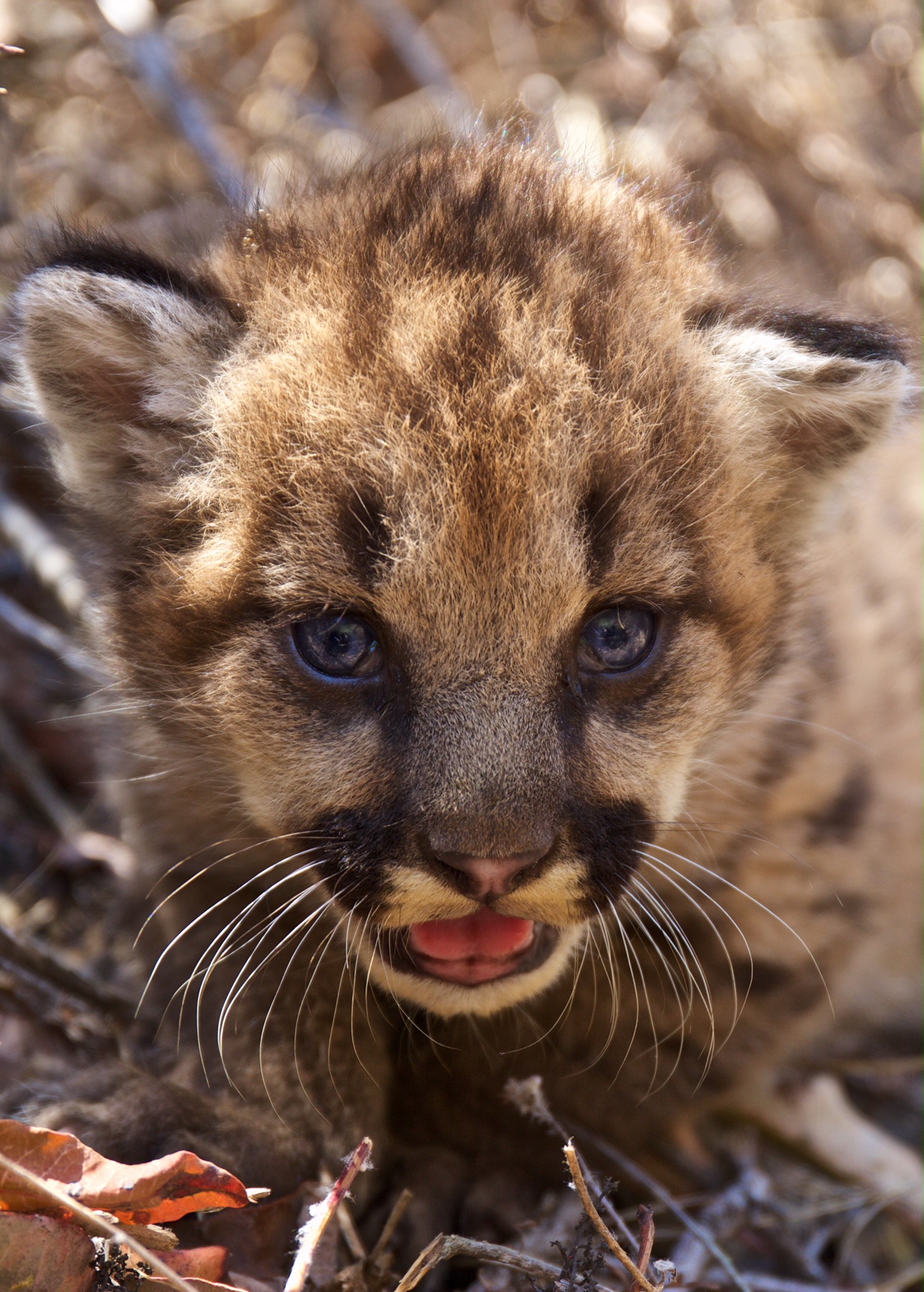News Release
You are viewing ARCHIVED content published online before January 20, 2025.
Please note that this content is NOT UPDATED, and links may not work. For current information,
visit https://www.nps.gov/aboutus/news/index.htm.

National Park Service
|
Subscribe
|
Contact: Kate Kuykendall, 805-370-2343
THOUSAND OAKS, Calif. -- National Park Service researchers recently discovered a litter of four mountain lion kittens, two males and two females, in a remote area of the Santa Monica Mountains. The four-week-old kittens are now known as P-70, P-71, P-72, and P-73.Although the blue-eyed, spotted kittens appeared to be in good health, researchers believe they are likely the product of inbreeding, a serious problem facing the isolated mountain lion population south of the 101 Freeway.
“We have documented multiple cases of inbreeding during the course of our study,” said Jeff Sikich, biologist for Santa Monica Mountains National Recreation Area. “The 101 Freeway is a major barrier to movement, which restricts the ability of mountain lions to come into and go out of the area, and unfortunately leads to a lack of breeding options.”
This is the fourth litter of kittens for their mother, P-19. She is believed to have mated with P-56, an approximately three-year-old male who is also her grandson (P-19 is the mother of P-56’s mother, P-23). P-56 himself is also a product of inbreeding since his mom mated with her own father (and also grandfather), P-12. Although genetic testing is required to confirm P-56’s paternity, the two mountain lions spent time together 90 days prior to the birth of the kitten, which is the gestation period for mountain lions.
National Park Service biologists took tissue samples, conducted a general health check, and marked the kittens with ear tags.
NPS researchers have studied P-19, who is now eight years old, since she was approximately four weeks of age, providing valuable long-term data on the challenges to survival for mountain lions in the area. Of the seven known kittens from her previous three litters, four have died (P-23, P-32, P-33, and P-34), two were never outfitted with GPS collars (P-24 and P-46), and only one is confirmed to be alive (P-47).
Along with the population in the Santa Ana Mountains, genetic diversity levels for mountain lions in the Santa Monica Mountains were found to be lower than have been measured anywhere else in the west. A study co-authored in 2016 with researchers at UCLA found that without increased connectivity, especially animals moving in from the north, the population in the Santa Monica Mountains is at risk of extinction.
Caltrans, along with numerous other partners, is currently working on a plan to build a wildlife crossing over the 101 Freeway in the Liberty Canyon area and released the environmental compliance document earlier this year.
This is the sixteenth litter of kittens marked by National Park Service biologists at a den site. Three additional litters of kittens were discovered and marked when the kittens were already at least six months old.
The National Park Service has been studying mountain lions in and around the Santa Monica Mountains since 2002 to determine how they survive in an increasingly fragmented and urbanized environment.
The California Department of Fish and Wildlife is responsible for overseeing the management and conservation of mountain lions in the state.
Santa Monica Mountains National Recreation Area (SMMNRA) is the largest urban national park in the country, encompassing more than 150,000 acres of mountains and coastline in Ventura and Los Angeles counties. A unit of the National Park Service, it comprises a seamless network of local, state, and federal parks interwoven with private lands and communities. As one of only five Mediterranean ecosystems in the world, SMMNRA preserves the rich biological diversity of more than 450 animal species and 26 distinct plant communities.
###
Last updated: September 7, 2018
